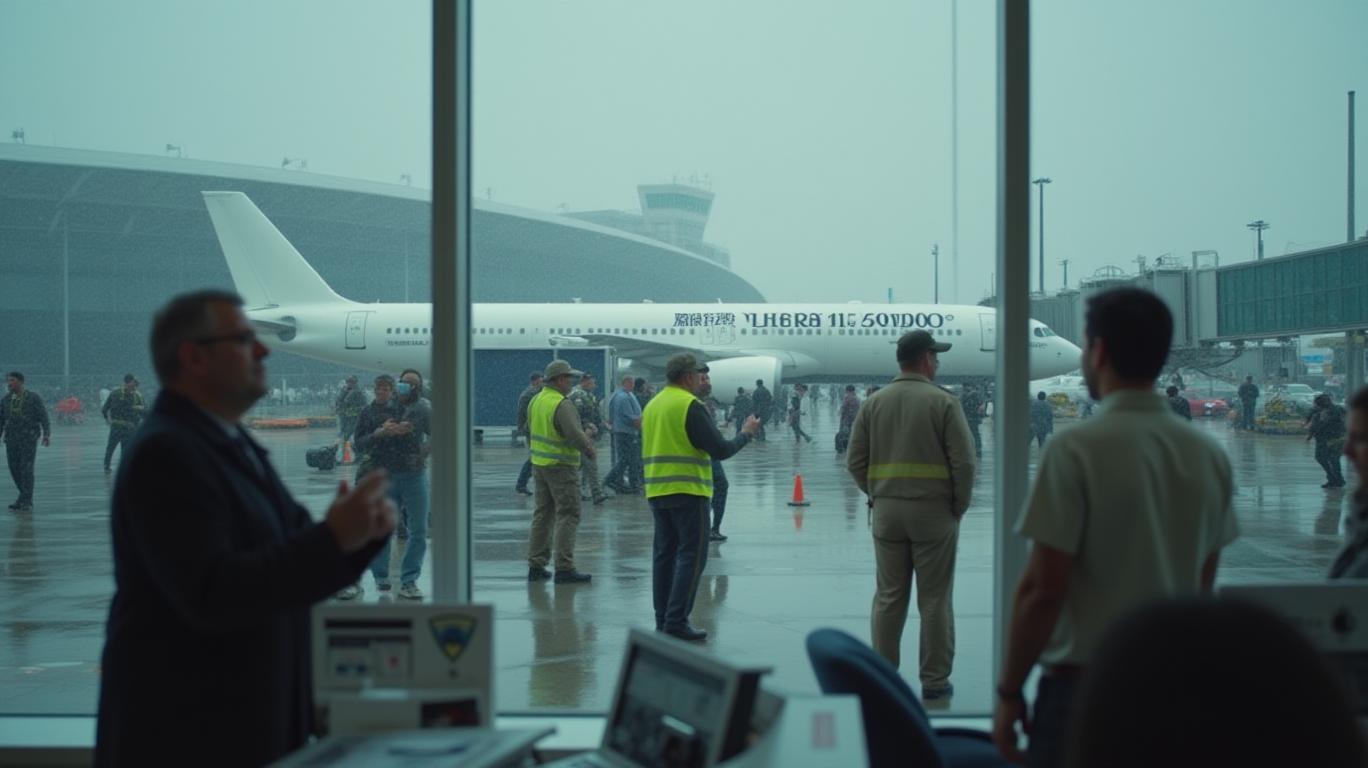Navigating the Skies of Risk: Newark Outage Exposes U.S. Aviation's Vulnerabilities
The recent 90-second communications outage at Newark Liberty International Airport (EWR) on May 9, 2025—just days after a similar incident in late April—has reignited concerns over the fragility of U.S. air traffic control (ATC) infrastructure. This recurring crisis, rooted in outdated technology and chronic staffing shortages, has disrupted travel, strained airlines, and raised critical questions about investment risks and opportunities in the aviation sector.

Root Causes of the Outage: A System in Crisis
The May outage, which occurred at the Philadelphia TRACON facility managing Newark’s airspace, was caused by a failed power supply unit in the FAA’s legacy air traffic control system. This system, reliant on 1980s-era copper wiring and outdated radar technology, lacks redundancy and modern safeguards. Key vulnerabilities include:
1. Outdated Infrastructure: The FAA’s Standard Terminal Automation Replacement System (STARS) uses floppy disks for software updates and paper strips for flight coordination.
2. Staffing Shortages: The Philadelphia TRACON, responsible for Newark, operates with only 22 certified controllers—far below the required 34—and faces a 20% staff exodus due to stress-related leave.
3. Compounding Factors: Newark’s closed runway (handling 50% of traffic) and poor weather further exacerbated delays, with 36% of flights delayed and 12% canceled since April 28.
Market Reactions and Stock Performance
The outage’s immediate impact has been felt most acutely by United Airlines (UAL), which relies on Newark for 75% of its hub traffic and 24% of its international capacity.
- UAL’s Struggles:
- United cut 35 daily flights (10% of Newark operations) to mitigate delays, directly reducing revenue.
- CEO Scott Kirby warned that Newark’s capacity will remain constrained until 2028 due to FAA staffing and infrastructure delays.
UAL’s stock fell 8% in May, underperforming peers like Delta (-3%) and American (-2%), reflecting investor skepticism about its hub dependency.
Broader Sector Risks:
- The FAA’s nationwide controller shortage (3,000 positions unfilled) and 1,000 weekly equipment failures create systemic risks for airlines reliant on high-traffic hubs.
- Frontier Group Holdings (ULCC), though less exposed to Newark, faces its own challenges, including a $43M Q1 2025 net loss and margin pressures.
FAA’s Modernization Plan: A Long Road Ahead
Transportation Secretary Sean Duffy has proposed a $40B overhaul to replace copper wiring with fiber-optic networks, consolidate regional control centers, and hire 2,000 new controllers. However, full implementation is expected to take 3–4 years, leaving airlines to endure near-term disruptions.
Investment Implications
- Short-Term Risks:
- Airlines with heavy Newark exposure (e.g., UAL) face earnings volatility. Investors may rotate to carriers like Delta (DAL) or American (AAL), which have diversified hubs and less reliance on Newark.
The FAA’s delays in staffing and modernization could prolong operational chaos, further denting airline profitability.
Long-Term Opportunities:
- Infrastructure Plays: Firms involved in aviation tech (e.g., fiber-optic providers, radar systems) or airport upgrades may benefit from the FAA’s $40B plan.
Post-Upgrade Gains: Airlines like UAL could rebound once modernization reduces delays and improves on-time performance (currently 63% at Newark vs. an industry standard of 80%).
Key Metrics to Watch:
- FAA funding approvals and staffing progress.
- Newark’s delayed flight rates and runway reopenings.
- UAL’s capacity adjustments and revenue trends.
Conclusion: A Sector in Transition
The Newark outage underscores a systemic crisis in U.S. aviation, with outdated infrastructure and staffing gaps costing airlines billions in lost revenue and eroding investor confidence. While United Airlines (UAL) is the most immediate casualty, the broader sector’s recovery hinges on the FAA’s ability to execute its modernization plan.
Investors should prioritize:
- Diversified carriers (DAL, AAL) with minimal hub dependency.
- Low-cost airlines (ULCC) with strong balance sheets to weather near-term demand headwinds.
- Infrastructure-focused equities positioned to benefit from FAA upgrades.
The FAA’s proposed $40B investment could transform the sector by 2030, but until then, airlines and passengers alike remain grounded in uncertainty.

Comments
No comments yet